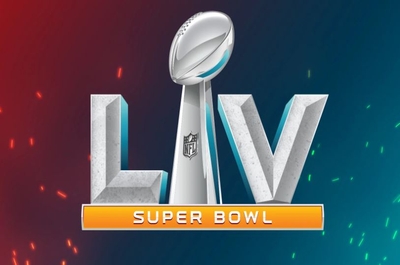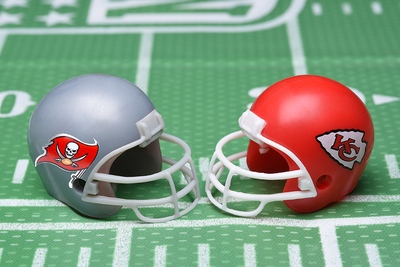 The Super Bowl is one of the biggest sporting events in the world and is watched by around 100 million people in the US alone. With the broadcast going out to around 200 countries, the total global audience is significantly higher.
The Super Bowl is one of the biggest sporting events in the world and is watched by around 100 million people in the US alone. With the broadcast going out to around 200 countries, the total global audience is significantly higher.
However, whilst it is an iconic, global event, the domestic dominance of the viewing figures (around 95% of those watching on TV will be American) is indicative of the fact that whilst the winners may be referred to as “world champions”, this is a US-only affair.
So, if like people in most other areas of the world, your knowledge of the NFL is a little lacking, we’re here to explain some of the basics. Unsurprisingly, given the title, this piece is concerned with how teams make it to the game’s showpiece, the Super Bowl itself. Let’s start at the beginning.
Route To The Super Bowl

The NFL season runs from September to the following February and can be divided into two distinct parts. The regular season lasts for 17 weeks between early September and the start of January. This is preceded by a four-week pre-season, though this is not part of the campaign-proper, with no competitive matches taking place.
The regular season is followed by the play-offs, also known as the post season. This is composed of four rounds, starting with wild card games, then the divisional play-offs, two Championship games and, last of all, the Super Bowl itself. This spectacular denouement takes place at the beginning of February and decides the overall champions. But let’s expand in a little more detail about how the teams make it to the showpiece game.
Regular Season
 So we know the regular season runs from September to January but what happens during the regular? Well, the NFL is made up of 32 clubs – or franchises – which are equally split into two conferences, the National Football Conference (NFC) and the American Football Conference (AFC).
So we know the regular season runs from September to January but what happens during the regular? Well, the NFL is made up of 32 clubs – or franchises – which are equally split into two conferences, the National Football Conference (NFC) and the American Football Conference (AFC).
The 16 teams in each are then grouped into four geographically based divisions: East, North, South and, you guessed it, West, with four teams in each.
The USA is a big old country, the fourth largest in the world by area, and so by splitting the teams with at least some geographic logic the travelling is limited. As such, at the time of writing the AFC East has the following teams, all of which are relatively close together on the Eastern seaboard.
- Buffalo Bills
- Miami Dolphins
- New England Patriots
- New York Jets
Each team plays 16 games, getting one week off. Fixtures are decided by a set formula which we do not need to go into fully here. However, in summary, we can say the following:
- Each team plays 13 other teams
- They play the sides in their own division twice, home and away
- Of the 16 fixtures, 14 are common ones played by all members of the division
- There are two unique games against teams from the same conference according to placings from the season prior
Put another way, that creates a 16-game regular season made up of:
- Three home games against teams in their division
- Three corresponding away games
- Four games against each team in another division from the same conference (two home, two away)
- Four games against each team in another division from the other conference (two home, two away)
- Two games from one of the other two divisions (not their own, or the one from point 3 above), one home, one away, according to team’s ranking the previous season
Whilst even that simplified version can sound a little complex, the key point is that each team plays 16 games, eight at home, eight away, with six against sides from their own conference and 12 (in total) from their own division.
At the end of the regular season 14 teams advance to the play-offs, seven from each conference. These teams are kept apart until the Super Bowl itself, the only inter-conference clash in the post-season. For three decades it had been 12 in the play-offs but in 2020 a further two teams were added (for the January 2021 post-season).

The first eight teams through to the play-offs are easy, with each of the divisional winners advancing. Then, from each conference, the three sides with the best win/loss records make the play-offs as wild cards.
The best-ranked divisional winner from each conference gets a bye through the wild card play-offs straight to the next round but the other six have home advantage against a wild card side from their own conference. The winners of each of the three wild card games from each of the two conferences (six games in total), advance to the divisional play-offs. Two more inter-conference deciders narrow the sides down to the final four, with two teams from the AFC and two from the NFC meeting in their respective conference games.
The higher seeded team has home-field advantage in a one-off game that decides which is the best team from each conference. These two meet in the Super Bowl, held at a pre-selected venue (that is almost always, though not absolutely always, neutral). As simple as that! We know that sounds fairly complex but once you watch a few games and get your head around the concept it is fairly simple.
So The Super Bowl Is Always NFC Versus AFC?
Yes sir. So we will never see a Super Bowl between two teams from the NFC or from the AFC. That means that barring some major changes, the Miami Dolphins could never meet the Tennessee Titans in the Super Bowl, to give just one example.
The post-season is structured so that teams play rivals from their conference, be it the AFC or the NFC, to determine the conference champions. These are crowned the best two teams from their conference and they then meet in a match that pits the best of the NFC against the best of the NFC. It is called the Super Bowl.
Which Conference Has The Better Record?

Check out some points of trivia below which will explain who has the upper hand, which is the most successful side in NFL history and some other fascinating Super Bowl facts.
- NFC Leads – the NFC has the slight edge with 28 Super Bowl wins to the AFC’s 27
- NFC Owns 80s and 90s – between the 1985 showpiece and the 1997 Super Bowl the NFC won 13 in a row.
- New England and Pittsburgh Out In Front – AFC duo the Pats and Steelers are the most successful teams in Super Bowl history with six wins each
- Brady Out On His Own – but Tom Brady beats both, with seven wins, his last coming at the ripe old age of 43
- No Home Comforts – amazingly it was not until Brady’s magnificent seventh win with the Bucs that a side had played the Super Bowl at their home stadium
- Back to Back – sides have defended the Super Bowl eight times, with Pittsburgh Steelers achieving the feat twice
- No Three-Peat – but no side has won three in a row, although Miami Dolphins and New England have both won two out of three and made the Super Bowl in the other year
- Four Times A Loser – one side beats three Super Bowls in a row but it is not a happy record as the Buffalo Bills from the AFC lost four in a row between 1990 and 1993
- Most Super Bowl Losses – The Pats may have won the most (joint) but they have also lost more Super Bowls than any other side, getting beat in the big one five times
- Two From Two – the Baltimore Ravens and 2021 champs the Tampa Bay Buccaneers are the only sides to appear in more than one Super Bowl and boast a 100% winning record, both with two victories
Note that stats are correct as of 10th February 2021, following Super Bowl LV (55) and include the first four Super Bowls (1967-70) when the NFC was known as the NFL and the AFC as the AFL.
